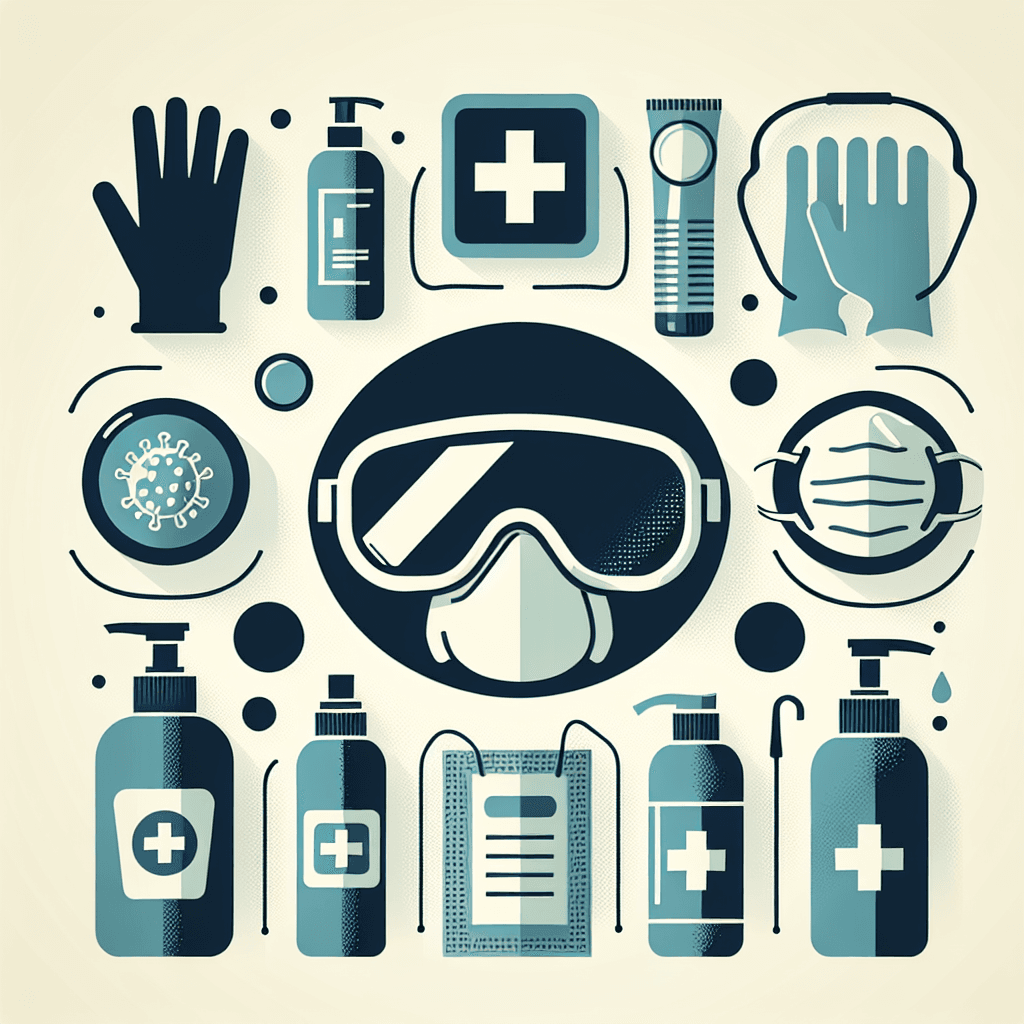Learn: Safety and Infection Control
Concept-focused guide for Safety and Infection Control (no answers revealed).
~7 min read

Overview
Welcome! This deep-dive will strengthen your understanding of safety and infection control in healthcare settings—a vital area for both protecting clients and safeguarding yourself and colleagues. By the end, you’ll be able to confidently analyze scenarios involving personal protective equipment (PPE), client identification, medication safety, ergonomic principles, hazardous substance handling, and security protocols. Expect plenty of practical strategies and insight into clinical reasoning for high-stakes decisions.
Concept-by-Concept Deep Dive
1. Personal Protective Equipment (PPE) and Hazardous Materials
PPE is specialized clothing or equipment worn for protection against health hazards. In healthcare, correct PPE selection is crucial for minimizing exposure to infectious agents and hazardous drugs like chemotherapy or cytotoxic agents.
Types of PPE and Their Uses
- Gloves: Protect hands from contact with blood, body fluids, or chemicals.
- Gowns: Shield skin and clothing from splashes or spills.
- Masks and Respirators: Prevent inhalation of airborne particles or droplets.
- Eye/Face Protection: Safeguard mucous membranes during procedures with risk of splashing.
Handling Hazardous Materials
- Spill Response: Immediate containment, use of spill kits, and appropriate PPE are key.
- Waste Disposal: Hazardous drug materials need designated sharps or cytotoxic waste containers—never dispose of in regular trash.
Calculation Recipe
- Assess the procedure (what exposure risks exist?).
- Select PPE based on the hazard (airborne, droplet, contact, or chemical).
- Properly don and doff PPE to avoid contamination.
Common Misconceptions
- All PPE is the same: Each hazard requires specific PPE. Mismatching increases risk.
- Regular trash is fine for all waste: Hazardous waste requires special handling to protect both health workers and the environment.
2. Client Identification and Security
Accurate client identification prevents errors in medication administration, procedures, and care—critical in ICU or high-risk settings.
Methods of Identification
- ID Bands: Primary tool—must always be present and legible.
- Alternative Verification: When the band is missing, use two independent identifiers (e.g., full name and date of birth) and/or family confirmation, per facility policy.
- Special Populations: For newborns, security features like matching mother-infant ID bands or electronic tracking systems are essential.
Security Protocols
- Transport and Handoffs: Always verify patient identity before procedures or transfers.
- Blood Transfusions: Require a two-person check and strict matching of client ID to blood product.
Stepwise Approach
- Use at least two identifiers.
- Never use room number or location alone.
- In emergencies, follow institutional policies for unidentified patients.
Misconceptions
- Visual recognition is enough: Relying on appearance is unsafe and error-prone.
- Skipping steps under pressure: Shortcuts during emergencies often lead to major errors.
3. Incident Reporting, Medication Errors, and Near Misses
Reporting and addressing errors or near misses is a crucial safety practice. It ensures transparency, learning, and the prevention of future incidents.
What to Do After an Error
- Immediate Assessment: Ensure the client’s safety first.
- Notification: Inform the provider and appropriate personnel.
- Documentation: Complete an incident report—this is not part of the medical record but informs quality improvement.
- Disclosure: Communicate honestly with the client/family per policy.
Near Misses
- Definition: An error that could have caused harm but did not, either by chance or timely intervention.
- Action: Report and analyze near misses to improve systems and prevent real harm.
Common Errors to Avoid
- Altering records: Never change documentation to hide an error.
- Failure to report: Not reporting errors or near misses prevents system-wide learning.
4. Restraints and Patient Safety
Restraints may be used to prevent harm but must be applied safely and ethically.
Types of Restraints
- Physical: Devices such as wrist or vest restraints.
- Chemical: Medications used to control behavior.
🔒 Continue Reading with Premium
Unlock the full vlog content, professor narration, and all additional sections with a one-time premium upgrade.
One-time payment • Lifetime access • Support development
Join us to receive notifications about our new vlogs/quizzes by subscribing here!